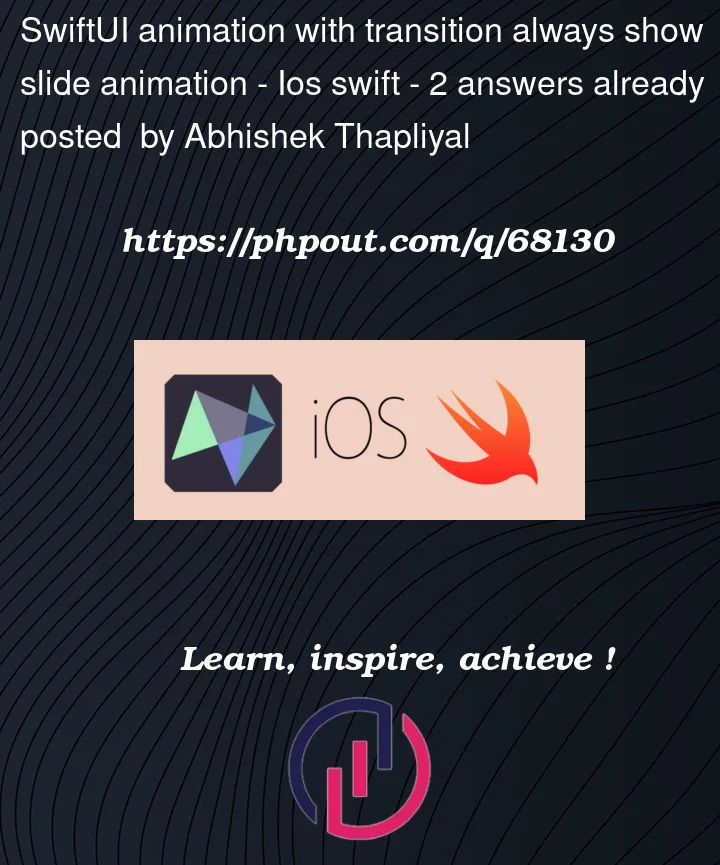I have sub-navigation inside Listview and trying to achieve leftSlide and rightSlide animation but it always shows default slide animation. I even tried to add .transition(.move(edge: . leading)) & .transition(.move(edge: . trailing))
import SwiftUI
import Combine
struct GameTabView: View {
@State var selectedTab: Int = 0
init() {
UITableView.appearance().sectionHeaderTopPadding = 0
}
var body: some View {
listView
.ignoresSafeArea()
}
var listView: some View {
List {
Group {
Color.gray.frame(height: 400)
sectionView
}
.listRowInsets(EdgeInsets())
}
.listStyle(.plain)
}
var sectionView: some View {
Section {
tabContentView
.transition(.move(edge: . leading)) // NOT WORKING
.background(Color.blue)
} header: {
headerView
}
}
private var headerView: some View {
ScrollViewReader { proxy in
ScrollView(.horizontal, showsIndicators: false) {
HStack(spacing: 16) {
Button {
withAnimation {
selectedTab = 0
}
} label: {
Text("AAAA")
.padding()
}
Button {
withAnimation {
selectedTab = 1
}
} label: {
Text("BBBB")
.padding()
}
Button {
withAnimation {
selectedTab = 2
}
} label: {
Text("BBBB")
.padding()
}
}
}
}
.background(Color.green)
}
@ViewBuilder private var tabContentView: some View {
switch selectedTab {
case 0:
DummyScreen(title: "FIRST", color: .red)
case 1:
DummyScreen(title: "SECOND", color: .green)
case 2:
DummyScreen(title: "THIRD", color: .blue)
default:
EmptyView()
}
}
}
struct DummyScreen: View {
let title: String
let color: Color
var body: some View {
VStack {
ForEach(0..<15, id: .self) { index in
HStack {
Text("#(index): title (title)")
.foregroundColor(Color.black)
.font(.system(size: 30))
.padding(.vertical, 20)
Spacer()
}
.background(Color.yellow)
}
}
.background(color)
}
}





2
Answers
Thanks to @tail and @Asperi
I finally got the solution via updating
ScrollViewwithScrollviewProxy:Just like Asperi said, you can change to another type of View to make the transition works.
I tried your code, changed List to VStack with ScrollView inside to wrap around the tabContentView, and the result of the UI showed the same except with a proper animation now, and you don’t have to manually adjust the height of your contents since HStack height is dynamic based on your Text() growth.
Edited: header fixed, animation fixed